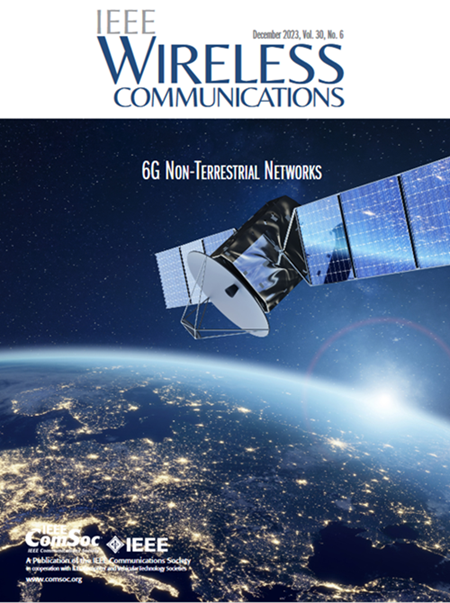6G增强型超可靠和低延迟服务的机器学习
IF 10.9
1区 计算机科学
Q1 COMPUTER SCIENCE, HARDWARE & ARCHITECTURE
引用次数: 9
摘要
超可靠和低延迟通信(URLLC)作为第五代(5G)和第六代(6G)蜂窝网络的主要通信服务之一,对于支持各种新兴的关键任务应用至关重要。然而,现代移动网络无法满足时延和可靠性要求,以及其他服务质量(QoS)要求,包括频谱效率、能效、容量、抖动、往返延迟、网络覆盖等。为了满足各种URLLC应用的不同QoS需求,机器学习(ML)解决方案在未来的6G网络中很有前景。在本文中,我们首先将6G URLLC愿景分为三种连接特征,包括泛在连接、深度连接和全息连接,并具有相应的独特QoS要求。然后,我们确定了满足这些连接要求的潜在挑战,并研究了有前途的ML解决方案,以实现6G URLLC服务的智能连接。我们进一步讨论了如何实现ML算法来保证不同URLLC场景的QoS需求,包括移动性URLLC、大规模URLLC和宽带URLLC。最后,我们给出了一个下行URLLC通道访问问题的案例研究,分别通过集中式深度强化学习(CDRL)和联邦DRL (FDRL)解决,验证了机器学习对URLLC服务的有效性。本文章由计算机程序翻译,如有差异,请以英文原文为准。
Machine Learning for 6G Enhanced Ultra-Reliable and Low-Latency Services
Ultra-reliable and low-latency communications (URLLC), as one of the major communication services of the fifth-generation (5G) and the sixth-generation (6G) cellular networks, is critical to supporting a variety of emerging mission-critical applications. However, the modern mobile networks could not satisfy the latency and reliability requirements, as well as other Quality of Service (QoS) requirements, including spectrum efficiency, energy efficiency, capacity, jitter, round-trip delay, network coverage, etc. To fulfill diverse QoS requirements for various URLLC applications, machine learning (ML) solutions are promising for future 6G networks. In this article, we first categorize the 6G URLLC vision into three connectivity characteristics, including ubiquitous connectivity, deep connectivity, and holographic connectivity, with their corresponding unique QoS requirements. We then identify potential challenges in meeting these connectivity requirements, and investigate promising ML solutions to achieve the intelligent connectivity for the 6G URLLC service. We further discuss how to implement the ML algorithms to guarantee the QoS requirements for different URLLC scenarios, including mobility URLLC, massive URLLC, and broadband URLLC. Finally, we present a case study of downlink URLLC channel access problems, solved by centralized deep reinforcement learning (CDRL) and federated DRL (FDRL), respectively, which validates the effectiveness of machine learning for URLLC services.
求助全文
通过发布文献求助,成功后即可免费获取论文全文。
去求助
来源期刊

IEEE Wireless Communications
工程技术-电信学
CiteScore
24.20
自引率
1.60%
发文量
183
审稿时长
6-12 weeks
期刊介绍:
IEEE Wireless Communications is tailored for professionals within the communications and networking communities. It addresses technical and policy issues associated with personalized, location-independent communications across various media and protocol layers. Encompassing both wired and wireless communications, the magazine explores the intersection of computing, the mobility of individuals, communicating devices, and personalized services.
Every issue of this interdisciplinary publication presents high-quality articles delving into the revolutionary technological advances in personal, location-independent communications, and computing. IEEE Wireless Communications provides an insightful platform for individuals engaged in these dynamic fields, offering in-depth coverage of significant developments in the realm of communication technology.
 求助内容:
求助内容: 应助结果提醒方式:
应助结果提醒方式:


